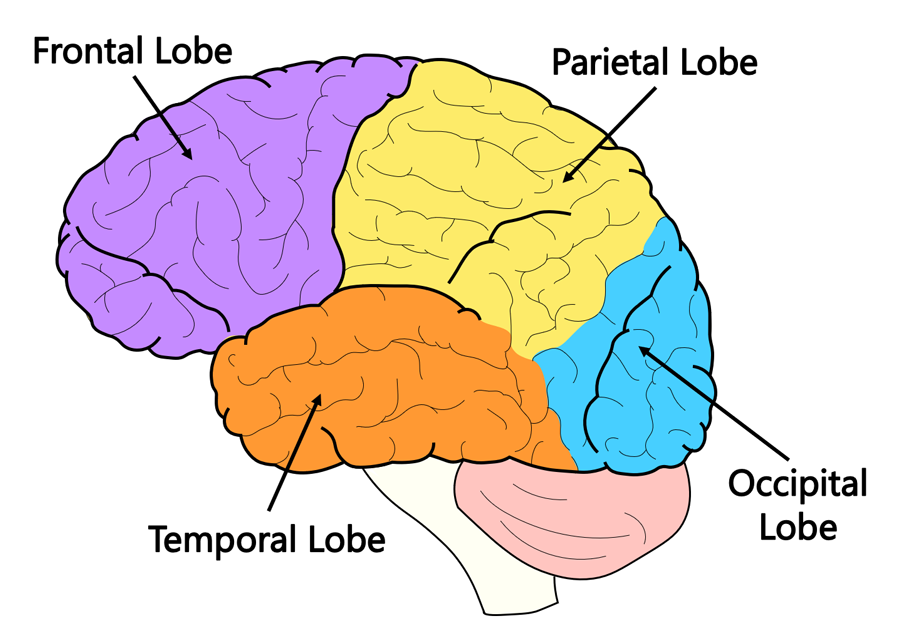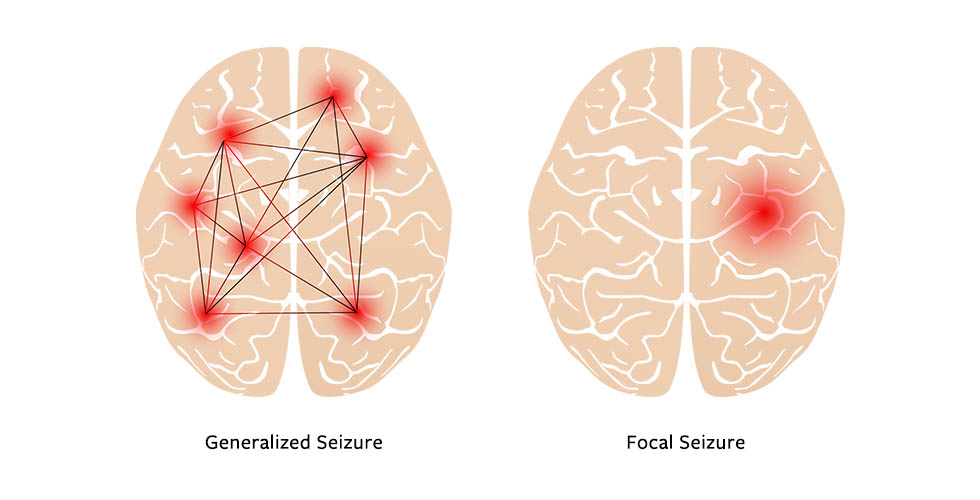Essential Facts About Epilepsy: Understanding Types, Causes, and First Aid
1 Context
There are more than 50 million people with Epilepsy [1], yet much regarding this conditions is not that well known.
Some key facts from the World Health Organization
Key facts
Epilepsy is a chronic noncommunicable disease of the brain that affects people of all ages.
Around 50 million people worldwide have epilepsy, making it one of the most common neurological diseases globally.
Nearly 80% of people with epilepsy live in low- and middle-income countries.
It is estimated that up to 70% of people living with epilepsy could live seizure- free if properly diagnosed and treated.
The risk of premature death in people with epilepsy is up to three times higher than for the general population.
Three quarters of people with epilepsy living in low-income countries do not get the treatment they need.
In many parts of the world, people with epilepsy and their families suffer from stigma and discrimination.
1.1 What is Epilepsy
Epilepsy means a person has recurring unprovoked seizures (two or more unprovoked seizures or one seizure with a high likelihood of having more).
Not all people who have seizures have epilepsy even if they haven’t been diagnosed yet. (see also Psychogenic non-epileptic seizures (PNES)).
A child can have seizures with high fever, and a person with diabetes can have seizures when they have big changes in the sugar-levels.
A person can act confused or look like they are daydreaming during a seizure.
2 Basic knowledge
2.1 Anyone can gave a seizure
1 in 10 people (anyone at any place) will have a seizure in their lifetime. It is a common symptom of brain dysfunction.
Most seizures are not medical emergencies. Most of them will last from several seconds to a few minutes and stop on their own.
A person having a seizure may not be aware they are having a seizure amd may not remember what happened. Some persons have auras before a seizure and may communicate those around them to be aware.
Seizures are NOT contagious.
A person cannot swallow their tongue during a seizure. DO NOT put anything in the mouth of the person having the seizure.
Not all seizures look alike. A seizure is caused by changes in electrical signals in the brain, and how it looks depends on the part of the brain that was affected.
A person can die from a seizure. It is rare but possible for a person to die from a seizure. The risk of death can be reduced with proper first aid.
About 1/3 of people diagnosed with epilepsy continue to have seizures despite treatment.
3 Seizures and epilepsy
Seizures can be caused by many factors and not just epilepsy.
A seizure occurs when there is a temporary change in the way the brain sends electrical signals. When a seizure happens, there is a "short circuit" (or electrical storm) in the way messages are sent between brain cells.
3.1 Psychogenic non-epileptic seizures (PNES)
There are seizures which are not related to changes in the brain´s electrical activity and are associated with physical or psychological factors.
First Aid principles for seizures apply to Epileptic and non-Epileptic seizures.
3.2 Common causes of seizures
High temperature (fever or heatstroke)
Brain injuries (head trauma, stroke)
severe dehydration
brain disorders (genetic syndromes, neurodegenerative disorders)
brain tumors
brain infections
3.3 Seizure triggers
A trigger is something that seems to be consistently associated with seizures in an individual. It is important to know these triggers so that persons with epilepsy and their caregivers can know what is triggering the seizures and avoid them, if possible.
missed medicines: missing doses of seizure medicine can trigger seizures in people with well-controlled and poorly-controlled epilepsy. In these cases seizures can happen more often than normal, be more intense or develop into Prolonged Seizure Activity (Statis Epilepticus).
lack of sleep: seizures are very sensitive to sleep patterns. For people with epilepsy, the lack of "good sleep" may make it more likely for them to have seizures and even increase the intensity and length of the seizures.
-
stress: is not clear why stress triggers seizures, but you should consider the following:
stress releases hormones related to the nervous system that can impact the brain.
the same areas of the brain involved in emotions and responding to stress, can also be the source for some types of seizures (for example focal seizures).
stress can cause problems sleeping which is also a seizure trigger.
alcohol: alcohol may interfere with certain anti-seizure medications and may facilitate the development of Breakthrough Seizures. (see also the Glossary. Alcohol withdrawal can also be a potential trigger of seizures.
recreational drugs: the effects and risk of these drugs vary greatly and may directly affect the brain and seizures or interact with seizures medications. Please discuss this with your medical advisor if you want to know more.
hormones: hte brain contains many nerve cells that are directly affected by estrogen and progesterone. For women with epilepsy, the hormonal changes during the menstrual cycle can cause changes in seizure frequency. This is called Catamenial Epilepsy
sensitivity to light: for about 3% of people with epilepsy, exposure to flashing lights at certain intensities or to certain visual patterns can trigger seizures. This is known as Photosensitive Epilepsy
other illnesses: being sick with some type of acute illness or infection can trigger seizures in people with epilepsy. For example: head colds (common colds), lung infections or sinus infections.
-
nutritional deficiencies:
very low levels of sugar in the blood can cause seizures, especially in people with diabetes who take too much insulin.
deficiency of vitamin B6 (pyridoxine) can cause or worsen seizures.
low levels of sodium, calcium and magnesium can alter the electrical activity of the brain cells and cause seizures.
over the counter medication (OTC): some medicines you can get without prescription can potentially increase seizures in people with epilepsy, for example those to treat colds, allergies and sleep problems. For more information please contact your medical advisor.
3.4 What do seizures look like
The most common way seizures are identified is as a person lying on the ground with shaky movements. But that is just one way a seizure can happen and it is important to understand that there are many other ways a seizure can present itself and not match with the common idea of a seizure.
Symptoms are individual and can resolve in a change of movement, sensation, behaviour, speech or a persons level of awareness.
Because a seizure directly affects the brain electric activity, how it presents itself depends on the area of the brain involved:

Brain Lobes, from https://www.brainframe-kids.com/brain/facts-lobes.htm
Frontal Lobe: may show changes in movement, behavior, attention and other skills.
Parietal Love: seizures starting from this area cause sensory disturbances. For example: dizziness, numbness, tingling, temperature changes or hallucinations.
Temporal Lobe: this area involves emotions, memory, talking and understanding and these could be affected by a seizure. For example, a person may not be able to talk or understand what others are saying, may have sudden feelings of fear, anxiety or dread as if they are dying, or have unusual smells or tastes.
Occipital Lobe: Seizures starting from this area can initially involve simple visual symptoms, such as seeing colors, visual patterns or loss of vision.
3.5 Types of Epilepsy
3.5.1 Generalized epilepsy vs focal seizure

Generalized seizures affect both sides of the brain whereas focal seizures happen in one area of the brain. , from https://magazine.medlineplus.gov/article/understanding-different-kinds-of-seizures
The main difference is which area of the brain is affected. In a focal seizure, only a part of the brain is affected. In a generalized seizure, the whole brain is affected.
Is important to note that seizures are a primary symptom, and other health issues may develop or be present due to:
the cause of epilepsy
impact of seizures on the brain
problems from rare forms of epilepsy
4 Seizure recognition
There is not just one type of seizure, and it is important to learn how to recognize a seizure and discover what might trigger a seizure.
5 Seizure First Aid
Identify the correct and incorrect steps for helping a person having a seizure.
Define seizures and epilepsy
Identify correct and incorrect steps for helping a person having a seizure
Identify when you should call emergency services in the event of a seizure
Increase your confidence that you can help a person during a seizure
6 Glossary
- Breakthrough Seizures
-
Sudden unexpected seizures in someone who previously had achieved reliable control may result from forgetting the medication, taking less than prescribed over a period of time (producing a slowly falling blood level that permits a seizure once it reaches a sub-therapeutic range); withdrawal from excessive use of alcohol; or illness. [2]
- Catamenial Epilepsy
-
Catamenial epilepsy is a gender-specific type of epilepsy in which seizure frequency intensifies during certain phases of the menstrual cycle. An increase in seizures in parallel with the menstrual cycle in some women with epilepsy has been noticed since ancient times. [3]
- Photosensitive Epilepsy
-
Exposure to flashing lights at certain intensities or to certain visual patterns can trigger seizures. Check https://www.epilepsy.com/what-is-epilepsy/seizure-triggers/photosensitivity and this paper: https://www.epilepsy.com/sites/default/files/2022-10/Epilepsia_2022_fisher_visually_sensitive_seizures.pdf
